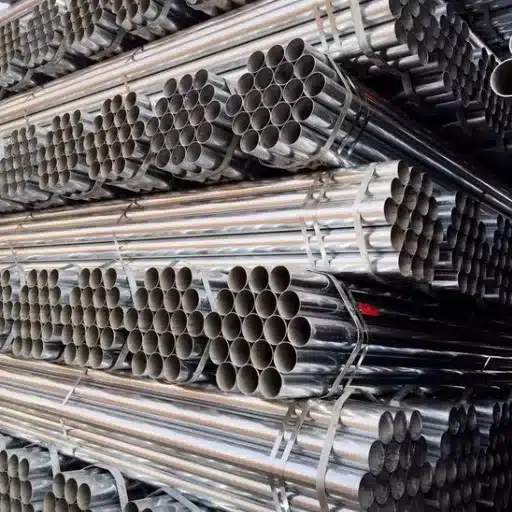Super Duplex Stainless Steel has changed the multifaceted industries that deal with super demanding environments that require high strength and durability. It’s also recognized for its amazing chemical resistance in the oil and gas sectors, chemical processing, and marine engineering. This article explains why Super Duplex Stainless Steel is different from other materials, focusing on its remarkable characteristics. From its extraordinary microstructure to its exceptional extreme condition performance, let us see why this alloy is invaluable in providing solutions to the most extreme environments. As an industrial expert or a curious individual interested in advanced materials, this post will provide all the information needed about this engineering marvel.
What is Super Duplex Stainless Steel and Why is it Revolutionary?
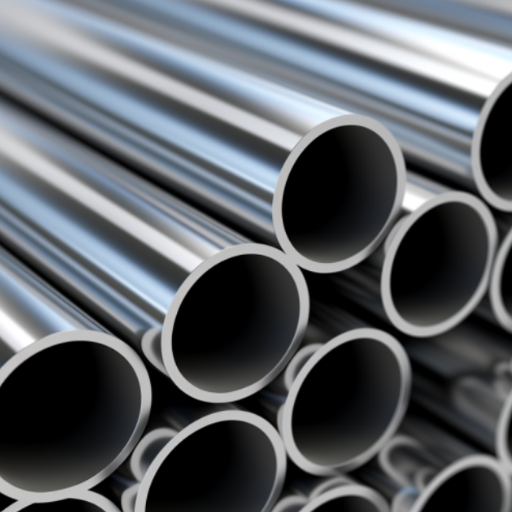
Super Duplex Stainless Steel is a highly sophisticated alloy renowned for its remarkable strength, corrosion resistance, and durability. It is termed ‘super duplex’ due to its microstructure comprising a balanced blend of austenite and ferrite, which makes it tougher and more resilient than the standard duplex stainless steels. Because of its unique composition, Super Duplex Stainless Steel performs exceptionally well in highly corrosive environments, such as offshore oil and gas operations, chemical processing, and marine applications. Its remarkable properties come from its capability to endure extreme conditions, including high pressure, high temperatures, and prolonged exposure to aggressive chemicals while still keeping its structure intact. These attributes enable Super Duplex Stainless Steel to withstand intense industry longevity and performance under harsh incursions.
Introduction to Super Duplex: A Unique Type of Stainless Steel
Super Duplex Stainless Steel has a unique place in the metallurgical industry, as it possesses both mechanical strength and corrosion resistance. These properties are because of the dual-phase microstructure, which consists of equal parts austenite and ferrite. Super duplex outperforms standard stainless steels, especially in chloride-rich environments that are pitting and crevice corrosive. Super duplex, while retaining excellent ductility, offers exceptional tensile strength that is double compared of austenitic or ferritic stainless steels.
Super duplex owes its popularity to its superior resistance to stress SCC, especially in the oil and gas extraction industries. Super duplex’s wide application range comes from high-pressure and high-temperature conditions with corrosive environments such as hydrogen sulfide and seawater. Super duplex’s ability to endure sour service environments while reducing material weight provides enormous value by cost-effectively prolonging equipment life, as well.
Latest metallurgy advances allow the design of Super Duplex to enhance performance further. Aside from the corrosion resistance properties, Super Duplex has weldability and workability, which supports more sustainable designs and innovation across critical industries.
Key Differences Between Super Duplex and Conventional Stainless Steels
The first thing I observe when juxtaposing Super Duplex and conventional stainless steels is their differences. Unlike the traditional grades, Super Duplex has cand strength and is more resistant to corrosion, especially in difficult environments. Also, the duplex structure of Super Duplex incorporates austenitic and ferritic properties, which is better for durability and more resistant to cracking due to stress. Super Duplex differs from conventional stainless steels by having a better cost-to-performance ratio, especially regarding long-term dependability and maintenance for the other types. This is what sets Super Duplex apart for extraordinary engineering projects.
The Dual-Phase Structure: How Austenitic and Ferritic Grades Combine
The unique structure of Super Duplex stainless steel is responsible for its excellent properties. It has both austenitic and ferritic phases in approximately equal portions, which gives it an unmatched combination of mechanical strength and corrosion resistance. The austenitic portion gives better ductility and toughness, while the ferritic portion gives greater strength and resistance to stress corrosion cracking. Research indicates that Super Duplex stainless steel can have up to double the tensile strength compared to standard austenitic grade, which makes it useful in high-pressure areas. Also, the newer microstructural processing metrology makes the material’s pitting and crevice corrosion resistance much greater in chloride-intensive regions like the marine and chemical processing industries. This combination of material properties ensures dependability even in harsh environments.
How Does Super Duplex Steel Achieve Exceptional Corrosion Resistance?
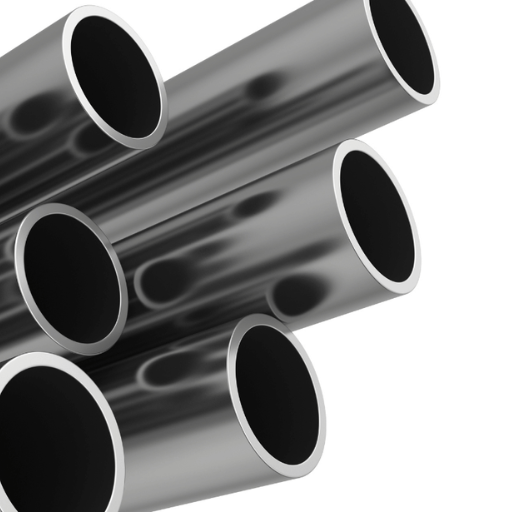
Super duplex steel boasts remarkable corrosion resistance owing to its unique dual-phase microstructure of austenite and ferrite. This balanced composition offers greater strength and also increases the material’s resistance to stress corrosion cracking, pitting, and crevice corrosion. Added to this, high chromium, molybdenum, and nitrogen content result in the formation of a protective passive layer on the surface, which guards the material against corrosive elements. These combinations of properties make super duplex steel highly durable in harsh environments like exposure to seawater or industrial chemicals.
The Role of Alloying Elements in Corrosion Resistance
The unmatched resistance of super duplex steel against corrosion is due to its alloying elements working together to resist degradation. One such element, chromium, increases the material’s capability to passively oxidize by providing a stable protective layer, which, in turn, defends against oxidation and corrosion. Moreover, Molybdenum aids in resisting localized forms of corrosion, including pitting and crevice corrosion, especially in seawater and other chloride-rich environments. Also, Nitrogen enhances structural strength while increasing pitting resistance by stabilizing the austenite phase, which also supports the argument. The argument that supports the reference.
For Example, 25–27% chromium and 3–4.5% molybdenum, and 0.2–0.3% nitrogen are contained as alloys in super duplex steel with specific quantities of nickel and iron. This composition enables the material to withstand extreme industrial applications such as offshore oil rigs and chemical plants, facing aggressive chemicals, constant chemical exposure, and saline environments. Studying the impact of these alloying elements is critical not only to recognize their contribution but also to appreciate the sophisticated engineering tailored to ensure material resilience in harsh environments.
Pitting Resistance Equivalent Number (PREN) Explained
The Pitting Resistance Equivalent Number (PREN) is an important parameter used in estimating a material’s resistance to pitting corrosion, in particular, within the context of chloride-rich environments. This figure is derived from the values of some alloying constituents like chromium (Cr), molybdenum (Mo), and nitrogen (N), which greatly determine the corrosion resistance of a material. The formula used to calculate PREN is:
PREN = %Cr + 3.3(%Mo) + 16(%N)
The materials removed from the environment and stored in containers undergo aggressive site conditions. Hence, enduring PREN pitting problems is one such factor they need to endure. For example, duplex stainless steels have low pitting resistance, nevertheless, they possess PREN values over 600, and thus are utilized in corrosive settings. Super duplex grades exceed remarkable values of 650, offering exceptional durability under extreme conditions. Engineers regard a material’s PREN value in alloying decisions involving diverse and crucial industrial performance expedites.
Nitrogen in Super Duplex: The Secret Ingredient for Enhanced Protection
Nitrogen is essential to enhance the corrosion and mechanical properties of super duplex stainless steels. Nitrogen enhances the alloy’s microstructure, enduring pitting and overall structural damage in aggressive environments. It increases the pitting resistance equivalent number (PREN), which is critical in measuring the amount of corrosion inhibitors and chlorides a material can withstand. Take, for instance, super duplex grades where the nitrogen content is optimized, a more than 40 PREN value is common, which is very protective in seawater and other chloride-infested places.
More than that, nitrogen increases the alloys’ tensile strength and resistance to stress corrosion cracking making these alloys more durable and efficient in demanding sectors such as offshore oil and gas, desalination plants, and chemical processing. Other studies have also pointed out that Nitrogen addition raises resistance to intergranular corrosion and enhances weldability, increasing the scope of super duplex stainless steels. With these advantages of nitrogen, industries can secure performance and durability in the toughest operating conditions.
What Makes Super Duplex Stainless Steel Grades Superior to Traditional Stainless Alloys?
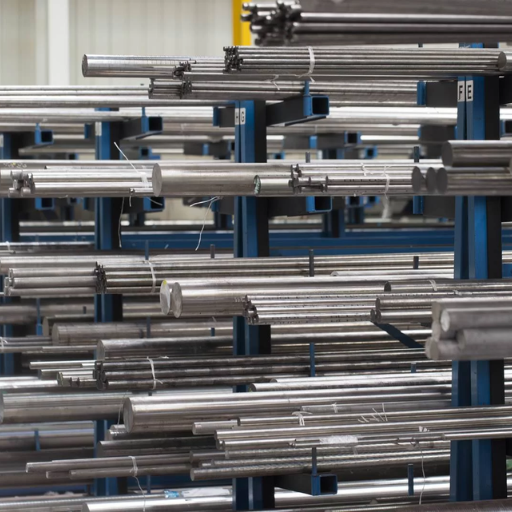
Super duplex stainless steels are considered much better than traditional stainless alloys because of their increasing strength, exceptional corrosion resistance, and unparalleled durability. Unlike the austenitic or ferritic stainless steels, they also combine both, which further improves the mechanical strength and the resistance to stem corrosion cracking. Moreover, their improved resistance to pitting and crevice corrosion increases their usefulness in high-risk areas like the marine industry or chemical processing. The super duplex derives its advantage from being able to function longer with less maintenance, which makes it cheaper and dependable for crucial processes.
Comparing Corrosion Resistance of Super Duplex vs Standard Duplex and Austenitic Stainless Steel
Super duplex stainless steel boasts even better corrosion resistance than standard duplex and austenitic stainless steel. This advantage is due to its higher chromium content (generally 24-26%) and molybdenum (3-5%) which protects against pitting and crevice corrosion in chloride-rich environments like seawater or industrial cooling systems. Super duplex stainless steels have a Pitting Resistance Equivalent Number (PREN) value of over 40 and standard duplex steels have a PREN of approximately 35 while austenitic steels like 316L have a PREN of 25.
Most super duplex stainless steel grades also have greater resistance to SCC (stress corrosion cracking) at elevated temperatures compared to austenitic grades. Under high temperature, acidic conditions, austenitic grades become increasingly vulnerable due to their higher nickel content. Super duplex stainless steels maintain mechanical strength better than standard duplex grades which offer some improvement over austenitic steels, but not enough to withstand highly corrosive environments. These properties make super duplex stainless steels essential for use in highly corrosive environments with unparalleled durability and dependability.
Strength and Corrosion Resistance: The Perfect Balance
Super duplex stainless steels strike a remarkable balance between strength and corrosion resistance, setting them apart in industries where durability and reliability are paramount. These alloys achieve tensile strengths nearly double that of standard austenitic or ferritic grades, making them ideal for heavy-duty applications. Additionally, advanced microstructural engineering contributes to their ability to withstand pitting, crevice corrosion, and stress corrosion cracking, even in environments rich in chlorides and other aggressive chemical agents.
Recent advancements underscore the material’s exceptional performance in subsea pipelines, offshore platforms, and chemical processing plants. For example, data has shown that super duplex stainless steels can withstand prolonged exposure to seawater without significant degradation, drastically reducing maintenance costs and extending the lifespan of infrastructure. With their enhanced mechanical properties and remarkable corrosion resistance, these alloys remain indispensable for projects demanding sustainable and efficient materials.
Resistance to Pitting and Crevice Corrosion in Harsh Environments
Super Duplex Stainless Steels or SDSS posses unique resistance to localized corrosion such as pitting or crevice corrosion in extreme environments. This is due to the passive oxide layer on the SDSS surface which acts as a barrier to aggressive ions. Recent research suggests these alloys have critical pitting temperatures higher than many other stainless steel grades, making them suitable for seawater, oil and gas production, and chemical processing regions.
As an illustration, laboratory studies have shown super duplex grades like UNS S32750 and UNS S32760 have critical pitting temperature or CPT over 50 degrees Celsius in chloride solutions, outperforming standard duplex and austenitic stainless steels. Further, their resistance to crevice corrosion makes them trustworthy in marine infrastructures, which are often associated with stagnant water and crevice-prone regions.
These advancements show the importance of super duplex stainless steels in industries where failure due to localized corrosion can cause operational and financial losses. With their long-lasting attributes, super duplex stainless steels ensure low maintenance and increased efficiency in tough conditions.
Where is Super Duplex Steel Applied for Its Corrosion Resistance and High Performance?

Super duplex stainless steel is commonly used in industries that demand exceptional strength alongside corrosion resistance. Its use is prevalent in the oil and gas industry for pipelines, risers, and subsea equipment because of its ability to withstand the brutal environment, which includes saltwater and corrosive chemicals. The chemical and petrochemical industries also use it for processing equipment, storage tanks, and heat exchangers, as super duplex provides reliable, safe, and efficient operations. It is also extensively used in marine applications such as shipbuilding, construction of desalination plants, and offshore structures due to the extreme exposure to seawater and other harsh conditions that require tough materials.
Super Duplex Steel Applications in the Oil and Gas Industry
The adaptability of super duplex steel stems from the oil and gas industry’s evolving needs for new materials, as it requires new technologies. These are some of the most crucial reasons why super duplex steel became predominant in the oil and gas sector.
1、Subsea Equipment
Super duplex steel is extensively employed in subsea pipelines, manifolds, and well-head systems. Super duplex’s resistance to stress corrosion, cracking caused by chloride, and low temperature conditions makes it suitable for deep-sea regions.
2、Heat Exchangers
In processing plants super duplex heat exchangers endure, thermally, and pressure-wise, intense forces while maintaning high operational efficiency, engineered to further improve durability and efficiency during operations.
3、Flowlines And Risers
Pipelines that transport oil and gas from offshore wells to onshore platforms or facilities, also known as flow lines, rely heavily on super duplex steel for tensile strength, suppression of pitting and crevice corrosion.
4、Desalination Plants
Super duplex steel plays an important role in the desalination process because less corrosion resistance is required to attend. Water injection systems that help maintain the pressure on reservoirs in oil fields require super duplex steel to withstand seawater.
5、Pressure Vessels
Oil and gas production has a number of significant challenges imposing harsh working conditions from externals. Super duplex pressure vessels deliver with greatly demanded strength and enduring reliability.
6、Offshore Platforms
The abrazed, lifted, and anchored components of offshore platforms are manufactured with super duplex steel because its resistance to harsh maritime conditions and severe weather is unparalleled.
7、Storage Tanks
Super duplex steel is used less for storage and more for the linings and internal components of tanks used for crude oil and chemicals because such corrosive storage environments require additional care for structural integrity and safety.
8、Separation Units
In the processing of oil and gas, aggressive mixtures require careful dealing which is why super duplex steel is useful for its role in separation units.
9、Valves and Pumps
Oil and gas operations face significant challenges dealing with highly corrosive fluids. Super duplex steel valves and pumps are crucial for their high corrosion resistance and mechanical strength.
These examples highlight the position super duplex steel holds in the oil and gas industries. An industry estimate states that its application can increase the reliability of important parts by as much as 20–30%, which decreases downtime and operational costs significantly. These are best kept for the material for industrial challenges, enduring harsh environments.
How Super Duplex Grades Ensure Longevity in Marine Environments
Super duplex grades are manufactured to endure the harsh conditions typically found in marine environments where high salinity, increased pressure, and constant exposure to water can damage traditional materials. Their metallurgical composition usually consists of a balanced proportion of austenitic and ferritic microstructures, which is crucial to their durability. This balance greatly improves the material’s susceptibility to pitting and crevice corrosion, often brought on by chloride ions found in seawater.
The capability of super duplex steels to resist localized corrosion and stress corrosion cracking is also significantly enhanced by high chromium, molybdenum, and nitrogen content. New information shows that marine infrastructure built with super duplex materials has been shown to have up to 25% better resistance to corrosion than standard stainless steel. These super duplex grades are ideal for offshore platforms, subsea constructions, as well as ship parts.
Super duplex grades also have exceptional mechanical strength, which supports their long lifespan. Their ability to excess loads and high-pressure conditions without deforming leads to decreased structural failure risks during long-term use. Additionally, the reduced maintenance resulting from the prolonged lifespan provides an edge to industries that heavily rely on maritime operations.
How Can You Ensure Super Duplex Maintains Its Corrosion Resistance Properties?
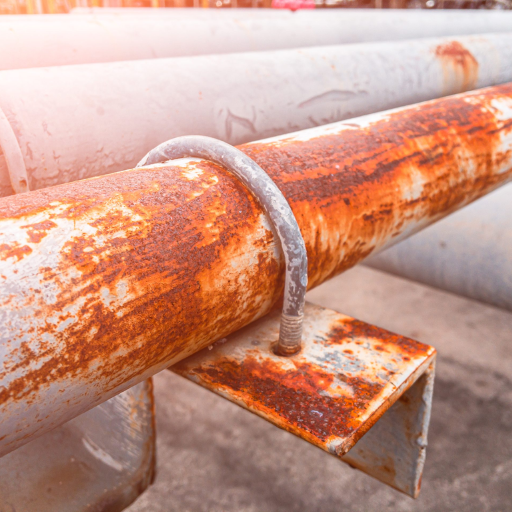
To retain the super duplex’s corrosion resistance characteristics, sound handling and care must be observed. First, you must not expose the material to conditions that might surpass the recommended temperature range because this might damage the microstructure. Second, the welding must be done by specialists who apply correct measures so that no damage is done to the alloy. In addition, cleaning surfaces to remove contaminants such as chloride deposits enhances localized corrosion prevention. Lastly, regular maintenance checks should be performed to identify and manage minor wear and tear, which could hinder the material’s function over time.
Proper Heat Treatment and Fabrication Techniques
Alloys and other materials gain a lot in their performance and durability from proper heat treatment and fabrication. To gain the desired outcome, the heating/cooling cycles within treatment must be managed properly. Uniform mechanical characteristics, as well as avoidance of warping or residual stress problems, demand strict control over the temperature during treatment. Depending on the material properties that need to be enhanced, such as increased hardness or ductility, specific annealing, quenching, and tempering need to be used.
Attention to detail is equally significant in fabrication, especially with more advanced and complex alloys. Modern welding techniques, such as laser and friction-stir welding, are capable of retaining structural heat-affected zones and minimal thermal distortion. Furthermore, the adoption of advanced machining techniques increases the precision of the work while also decreasing the useful material scrapped, improving the efficiency and cost-effectiveness of a workflow.
These innovations have brought to light the need for the integration of real-time monitoring systems and predictive analysis for added precision and efficiency. Data-driven solutions offer useful insights, allowing manufacturers to avert several defects. There is an indispensable synergy of the best expert insight alongside the treating and fabricating technologies for achieving optimal results in heat treatment and fabrication.
Avoiding Stress Corrosion Cracking in Super Duplex Alloys
Working with super duplex alloys poses a particular challenge in the form of stress corrosion cracking (SCC), especially in extreme environments. To mitigate the risk of SCC, material selection, overall geometry, environmental containment, and a myriad of other factors must be optimally combined.
The alloy must maintain a balanced microstructure along with an approx. 50/50 ferrite to austenite ratio. This ratio is sufficient to improve the alloy’s resistance to corrosion and mechanical stress. Also, the phase-changing processes that weaken the material need to be avoided through strict temperature control in processes such as welding.
Restricting exposure to chlorides is another critical factor because high concentrations of chlorides increase the risk of SCC. Coatings and inhibitors can defend against corrosive elements. Moreover, these treatments help overcome gaps created due to delta ferrite formation. Residual stress-relief annealing treatments are likely to offer residual stress reduction advantages in the alloy.
Systematic inspections and maintenance are critical as well, especially when it comes to maintaining the system’s integrity. Crack monitoring should start before the CPR phase while actuating, using non-destructive methods like ultrasound or eddy current testing. Applying these approaches can improve the efficiency and reliability of super duplex alloys in high-demand conditions.
Reference Sources
1、Duplex Stainless Steels—Alloys for the 21st Century (2021):
- Key Findings: This study highlights the evolution of duplex stainless steels, emphasizing their superior corrosion resistance due to a balanced microstructure of austenite and ferrite. It discusses their application in marine environments, heat exchangers, and chemical industries, showcasing their cost-effectiveness and high strength.
- Methodology: The paper reviews industrial applications and case studies, comparing duplex grades with other alloys using metrics like Pitting Resistance Equivalent Number (PREN).
2、Super Duplex Stainless Steels Overview (1992):
- Key Findings: Focuses on the physical metallurgy and corrosion properties of super duplex stainless steels, particularly their resistance to pitting in chloride-rich environments. It also explores their machinability and welding characteristics.
- Methodology: A comprehensive literature review and analysis of mechanical and corrosion properties, supported by references to experimental data.
3、Super and Hyper Duplex Stainless Steels: Structures, Properties, and Applications (2016):
- Key Findings: Discusses the development of hyper duplex steels with high nitrogen content and PRE-values nearing 50. These steels exhibit exceptional pitting resistance and mechanical strength, making them ideal for extreme environments in the oil and gas industry.
- Methodology: Comparative analysis of mechanical and corrosion properties, including critical pitting temperature and crevice corrosion resistance.
Frequently Asked Questions (FAQs)
Q: What are the questions about duplex stainless steel grades and their corrosion resistance?
A: Duplex stainless steels come in different grades, including lean duplex, standard duplex, super duplex, and hyper duplex stainless steels. Each grade offers varying levels of corrosion resistance, with super and hyper duplex containing higher levels of chromium, molybdenum, and nitrogen. Super duplex grades like 2507 and S32750 offer excellent resistance to pitting corrosion and stress corrosion cracking, making them ideal for demanding industrial applications and marine environments.
Q: How does super duplex stainless steel compare to austenitic and ferritic stainless steels in terms of corrosion resistance?
A: Super duplex stainless steel offers superior resistance to pitting corrosion compared to standard austenitic stainless steels. While austenitic and ferritic stainless steels exhibit good general corrosion resistance, super duplex combines the best properties of both, resulting in excellent corrosion resistance and toughness. Super duplex stainless steels typically have a PREN (Pitting Resistance Equivalent Number) value above 40, whereas standard austenitic grades like 316L typically have PREN values between 24-36, indicating the significantly enhanced resistance to localized corrosion.
Q: What specific properties give super duplex stainless steel its excellent corrosion resistance?
A: Super duplex stainless steel offers excellent resistance to various forms of corrosion due to its balanced chemical composition. The higher levels of chromium (typically 25%), molybdenum (3-4%), and nitrogen enhance its resistance to pitting corrosion and crevice corrosion. The dual-phase microstructure with approximately 50% austenite and 50% ferrite contributes to its resistance to stress corrosion cracking. This combination of alloying elements and microstructure provides superior corrosion resistance in aggressive environments, particularly in chloride-containing media.
Q: What are the questions about duplex stainless steel’s mechanical properties related to its corrosion performance?
A: Duplex stainless steels offer an exceptional combination of mechanical properties and corrosion resistance. Super duplex grades typically have yield strength approximately twice that of standard austenitic stainless steels (typically >550 MPa vs. ~220-240 MPa). The hardness of super duplex is also higher, generally between 28-32 HRC. This unique combination of strength and excellent corrosion resistance makes these materials particularly valuable in applications requiring both resistance and strength, such as offshore oil and gas, chemical processing, and desalination facilities.
Q: What are the differences between super duplex stainless steel and standard duplex stainless steel?
A: The primary differences between super duplex stainless steel and standard duplex stainless steel lie in their chemical composition and performance. Super duplex contains higher amounts of chromium, molybdenum, and nitrogen, resulting in a PREN value >40 compared to 30-39 for standard duplex. This translates to superior resistance to pitting corrosion and crevice corrosion in aggressive environments. Super duplex also offers enhanced resistance to seawater corrosion and better performance in acidic environments, while maintaining the balance of strength and ductility that makes duplex stainless steels generally desirable.
Q: How does hyper duplex stainless steel compare to super duplex in terms of corrosion resistance?
A: Hyper duplex stainless steels offer even greater corrosion resistance than super duplex grades, with PREN values typically exceeding 45. They contain even higher levels of alloying elements like chromium, molybdenum, and nitrogen. This enhanced composition provides exceptional resistance to pitting corrosion and crevice corrosion in extremely aggressive environments. While super duplex already delivers excellent corrosion resistance and mechanical properties for most severe applications, hyper duplex extends these capabilities further for the most demanding environments where even super duplex may face limitations.
Q: What applications requiring both corrosion resistance and strength are super duplex stainless steels best suited for?
A: Super duplex stainless steels are ideal for demanding industrial applications where both corrosion resistance and strength are critical. They excel in marine applications such as offshore platforms, seawater cooling systems, and desalination plants due to their resistance to seawater corrosion. Other suitable applications include chemical processing equipment, oil and gas production systems (particularly in sour service environments), heat exchangers handling corrosive fluids, pulp and paper digesters, flue gas desulfurization systems, and pressure vessels for corrosive media. Their combination of mechanical properties and corrosion resistance makes them cost-effective for these challenging environments.
Q: How does super duplex stainless steel’s resistance to stress corrosion cracking compare to other stainless steels?
A: Super duplex stainless steel offers superior resistance to stress corrosion cracking (SCC) compared to austenitic stainless steels, particularly in chloride-containing environments. While austenitic grades like 304 and 316 are susceptible to SCC in hot chloride solutions, super duplex’s balanced duplex structure significantly reduces this vulnerability. The ferrite phase in super duplex is inherently resistant to chloride SCC, and the high chromium and molybdenum content further enhances this property. This excellent resistance to stress corrosion cracking makes super duplex particularly valuable in applications involving both mechanical stresses and corrosive environments.






